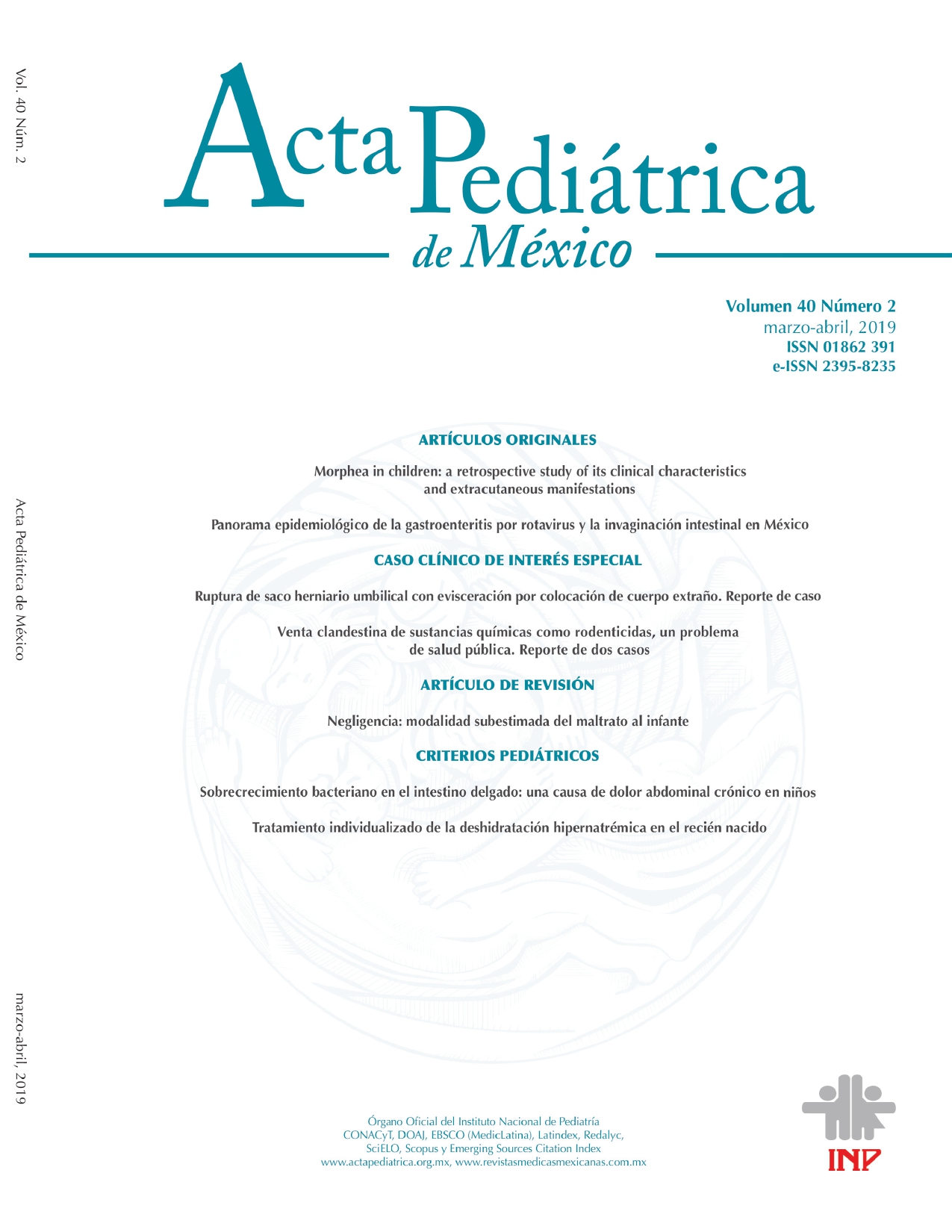Morphea in children: a retrospective study of its clinical characteristics and extracutaneous manifestations
Resumen
BACKGROUND: Morphea is an inflammatory disease with diffuse thickening and hardening of the skin. It is common in children and it has been reported that as many as 40% have extracutaneous articular and neurological manifestations, vascular and ocular disorders, and gastrointestinal or respiratory symptoms.
RATIONALE: There are no studies of associated extracutaneous manifestations in Mexican children with morphea.
OBJECTIVE: Describe clinical characteristics, frequency of extracutaneous manifestations, and treatment of pediatric patients with morphea who received care at the Instituto Nacional de Pediatría.
MATERIAL AND METHODS: A retrospective study of patients with morphea, 1 to 18 years of age, who received care between January 1, 2000, and December 31, 2015.
RESULTS: Thirty-two patients with morphea were included, half (n = 16) with the linear subtype, followed by plaque-type morphea in 7 (22%). Extracutaneous manifestations were reported in 23 (72%) patients; the most common were: musculoskeletal in 23 (72%), neurological in 9 (28%), and ophthalmological in 3 (9%). Twenty-three patients (72%) required systemic treatment. Nineteen patients (60%) required orthopedic and surgical treatment for complications. The clinical evolution was toward remission in 72% of the patients (n = 23).
CONCLUSIONS: In this series of 32 cases of children with morphea, 72% had extracutaneous manifestations, principally musculoskeletal and neurological. It is important to conduct targeted questioning, and if necessary perform paraclinical studies, to identify extracutaneous manifestations which may be associated with morphea, especially when it is linear or extensive.


